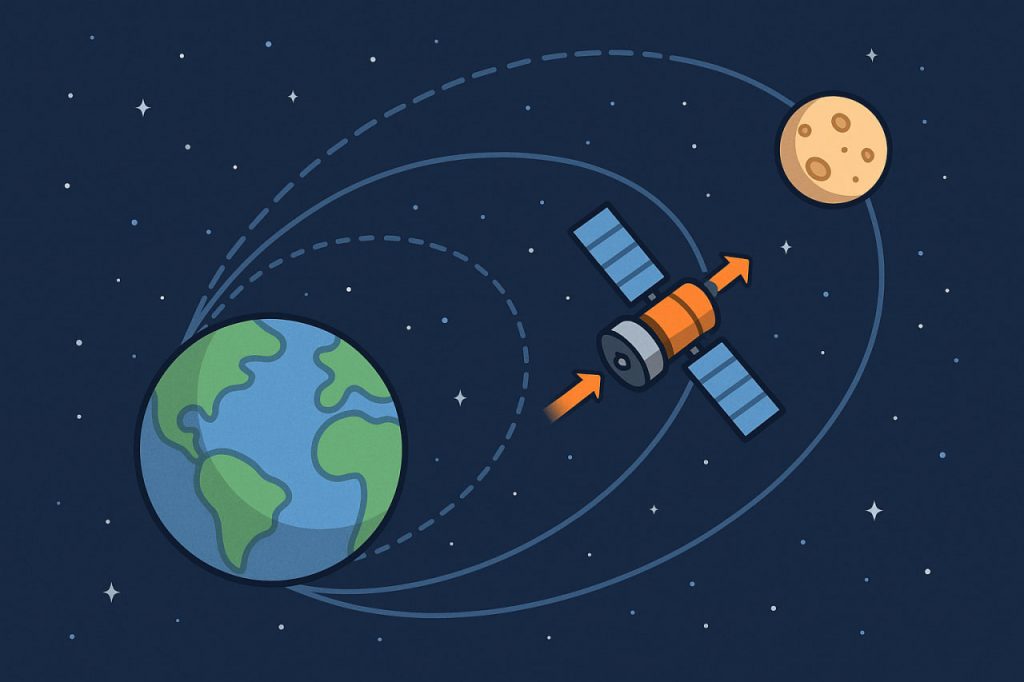Orbital mechanics, also known as celestial mechanics, is the branch of physics that describes how objects move in space under the influence of gravity. It is essential for planning and operating satellites, space probes, and missions to other planets. The principles of orbital mechanics are based primarily on Newton’s laws of motion and universal gravitation, refined later by Einstein’s theory of general relativity for extremely massive objects or very precise calculations.
Understanding how orbits work allows scientists and engineers to predict satellite paths, plan interplanetary travel, and maintain the stability of spacecraft around Earth and other celestial bodies.
Gravity and Motion
At the heart of orbital mechanics is the concept of gravitational force. All objects with mass attract each other. For planets and satellites, this attraction provides the centripetal force needed to maintain their curved motion. In simple terms, an object in orbit is constantly falling toward the body it orbits—but because of its forward motion, it keeps missing it, resulting in a circular or elliptical path.
The balance between the object’s inertia (tendency to move in a straight line) and the pull of gravity creates an orbit. The faster an object moves, the higher and more extended its orbit becomes.
Types of Orbits
There are several types of orbits, each with specific characteristics and applications:
- Low Earth Orbit (LEO): 160–2,000 km above Earth, used for satellites, the ISS, and Earth observation
- Geostationary Orbit (GEO): about 35,786 km high; satellites appear stationary above the same point on Earth
- Elliptical Orbit: oval-shaped, used for communication or scientific satellites
- Polar Orbit: passes over Earth’s poles, ideal for global imaging
Interplanetary missions use transfer orbits, like the Hohmann transfer, to move from one planetary orbit to another efficiently.
Kepler’s Laws of Planetary Motion
Orbital behavior is governed by Kepler’s three laws, which describe how planets move around the Sun:
- Orbits are elliptical, with the Sun at one focus
- A planet sweeps out equal areas in equal times, meaning it moves faster when closer to the Sun
- The square of the orbital period is proportional to the cube of the semi-major axis (distance)
These laws still form the foundation of modern orbital analysis.
Velocity and Energy in Orbits
To stay in orbit, a satellite needs to achieve orbital velocity—a precise speed that balances gravity. For Earth, this is about 7.8 km/s in low Earth orbit. If the object goes faster, it may escape into a higher orbit or even leave Earth’s gravity entirely, becoming unbound.
The escape velocity from Earth is approximately 11.2 km/s. Any object reaching this speed can leave Earth’s gravitational pull without further propulsion.
Orbital mechanics also considers kinetic and potential energy, where energy is conserved as an object moves between points in its orbit.
Orbital Maneuvers and Stationkeeping
To change an orbit, spacecraft perform orbital maneuvers by firing thrusters. This alters their speed and direction to shift to a new orbit. These burns are calculated precisely to save fuel and time.
Stationkeeping is the act of making small adjustments to maintain a satellite’s position, especially in geostationary orbits, where drift can lead to communication errors or collisions.
Missions like the Apollo moon landings or modern Mars rovers all rely on accurate orbital calculations to reach their targets safely and efficiently.
Glossary
- Orbital mechanics – study of how objects move under gravity in space
- Centripetal force – inward force keeping an object in curved motion
- Inertia – resistance to change in motion
- Elliptical orbit – an oval-shaped orbit
- Orbital velocity – speed needed to remain in orbit
- Escape velocity – speed required to break free from gravity
- Hohmann transfer – efficient orbital maneuver between two orbits
- Stationkeeping – maintaining a satellite’s correct position


